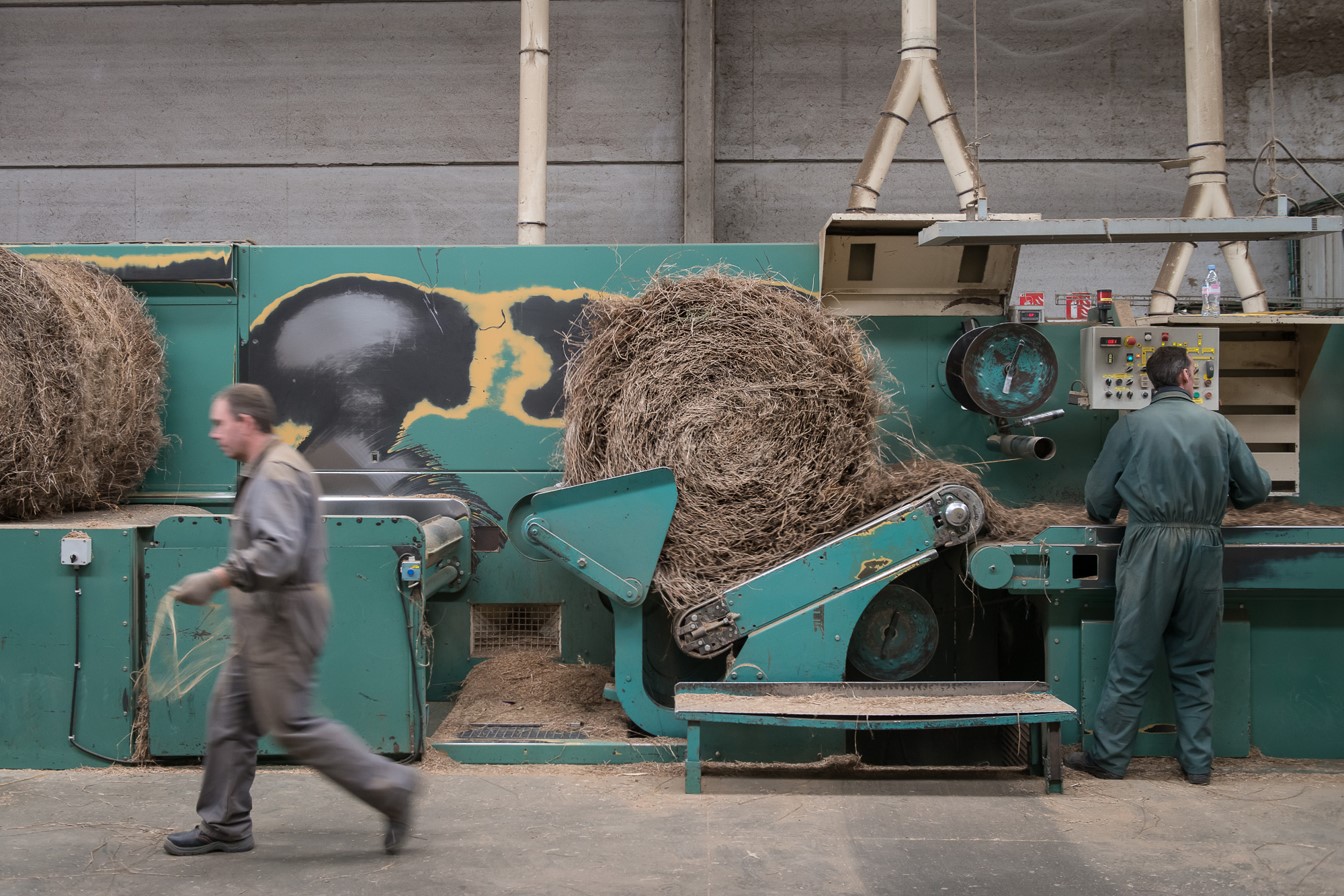Municipal waste landfills are often thought to contain items like discarded food, paper and plastic containers. But a significant share of the waste found in U.S. landfills comes from another source often overlooked.
According to the Environmental Protection Agency, landfills received 11.3 million tons of textiles in 2018. This number accounted for 7.7 percent of all municipal solid waste that ended up in landfills.
But waste isn’t the only growing environmental concern associated with textiles. Across the globe, an abundant amount of natural resources are used in growing the crops used in textile production.
Today’s consumers’ beliefs are increasingly changing how they shop. In fact, according to Nielsen, the U.S. sustainability market is expected to reach $150 billion by 2021. The data analytic company reports that nearly half of U.S. consumers would “definitely or probably change” their consumption habits based on the environmental impact.
When designing home decor products like table decor, window treatments, pillows, and furniture upholstery and slipcovers, manufacturers have a unique opportunity to create a luxurious and sustainable product by using natural linen fabric.
In fact, natural linen fabric is one of the most sustainable textiles available today because of its reduced burden on the use of natural resources and its long lifespan. Here’s what makes fine linen fabric one of the best choices for designers, manufacturers and consumers who want to incorporate more sustainability in their businesses and homes.
Few Resources Are Used During Flax Growth
 Linen is constructed using the fibers sourced from the stems of flax plants grown in cooler climates throughout the world, including the European coastal communities of Belgium, the north of France and the south of the Netherlands.
Linen is constructed using the fibers sourced from the stems of flax plants grown in cooler climates throughout the world, including the European coastal communities of Belgium, the north of France and the south of the Netherlands.
After flax is planted, it is harvested 100 days later. Fibers from the plant are separated and the leaves and seeds of the plant are removed. Flax fibers located inside the dried stems are also removed.
When growing flax, very little water is required. This allows farmers to reduce the need for irrigation or fertilization during the growing process. Flax also requires little to no pesticides, herbicides and fungicides.
Very little is wasted with a flax plant as well. Other parts of the plant, such as its seeds, can be used to produce oil or flax seeds for consumption.
These environmental benefits give linen fabric an advantage over many other types of materials. For example, pesticides and fertilizers are often used in the growth of cotton in fields. Because cotton is one of the largest non-food crops globally, its impact on soil is also significant.
In fact, although cotton is grown on just 2.5% of agricultural land, cotton farming consumes more than 16% of all insecticides and 6.8% of all herbicides.
Flax Is Grown Using A Crop Rotation Method
The sowing of flax takes place between mid-March and mid-April. Over the course of centuries, farmers have perfected a crop rotation method with flax, with the rotation renewed every six to seven years.
This regenerates the soil for succeeding crops, such as beets, wheat, potatoes and others.
Crop rotation methods are important to maintain soil structure and keep nutrient levels high. When the same crop is planted over and over again in the same location, pests are more likely to move in, creating the need for the use of insecticides. Plants may also be more susceptible to disease, increasing the need for herbicides and fungicides.
Linen Manufacturing Offers Sustainable Practices
 Although any manufacturing process will utilize some natural resources and produce waste, the manufacturing of linen incorporates sustainable practices thanks to the low amount of energy required to process flax.
Although any manufacturing process will utilize some natural resources and produce waste, the manufacturing of linen incorporates sustainable practices thanks to the low amount of energy required to process flax.
In fact, according to the European Confederation of Linen and Hemp, almost 80 percent of the energy and water consumption used during the linen manufacturing process comes from the washing and ironing of the textile.
Here is how linen is made:
- After sowing is completed, it takes approximately 100 days until the flax plant is ready for harvest.
- Retting then occurs, which is the act of placing the flax in water before it is taken out to dry. Retting allows the fibers of the plant to be more easily separated. The leaves, seeds and fibers located inside the dried stems of the flax plant are also removed.
- Scutching further loosens the flax fibers. This process involves metal rollers crushing the woody part of the stalk. Fibers are removed and other parts of the plant are set aside for other purposes, such as making paper.
- Natural fibers are then heckled. This process separates the short fibers using a combing technique, leaving behind the long flax fibers. Fibers are then spun into yarn before being woven into a textile product.
Because linen yarn is strong, this reduces the need for starching when manufacturers spin and weave the yarn. Organic linen, in particular, has earned the Global Organic Textile Standard for its processing of flax fibers into linen.
Linen Fabric Is Extremely Durable
Textiles can take years to decompose in landfills. Some synthetic fibers, like nylon fabric, can take as long as 30 to 40 years to decompose. Considering that the Council for Textile Recycling reports that the average U.S. citizen throws away 70 pounds of textiles annually, this can be especially concerning.
Fortunately, according to a report from Hohenstein Institute America, a textile research institute, linen fabric can begin to decompose when buried in soil in just a few weeks after being discarded.
When in use, linen fabric is extremely durable and enjoys a long lifespan. Unlike other fabrics that can break down and lose their freshness after multiple uses, linen ages very well. In fact, linen actually gets softer and improves as it ages, even after it is cleaned repeatedly.
For manufacturers, linen’s durability is welcome news for those who want to focus on creating products that can withstand time and remain fresh for generations to come.
Work With A Supplier To Ensure Sustainable Practices
While the growth of flax plants and the production of linen fabric offers several environmentally-friendly benefits, it’s important to work with a linen supplier that knows where the fabric they sell is sourced.
The best suppliers will know the history of their linen fabric, from where the flax used to create it was harvested to where the linen was manufactured. This will help ensure the highest sustainability standards are met and passed down to the clients who purchase your products.





